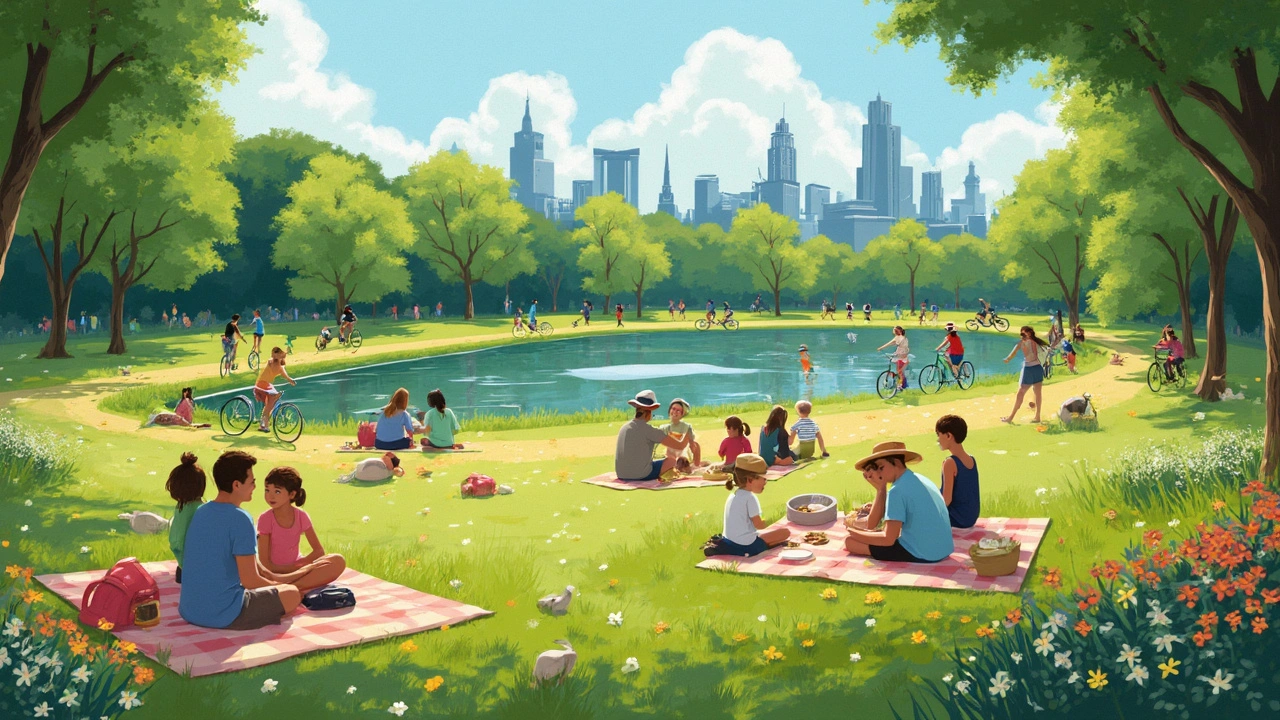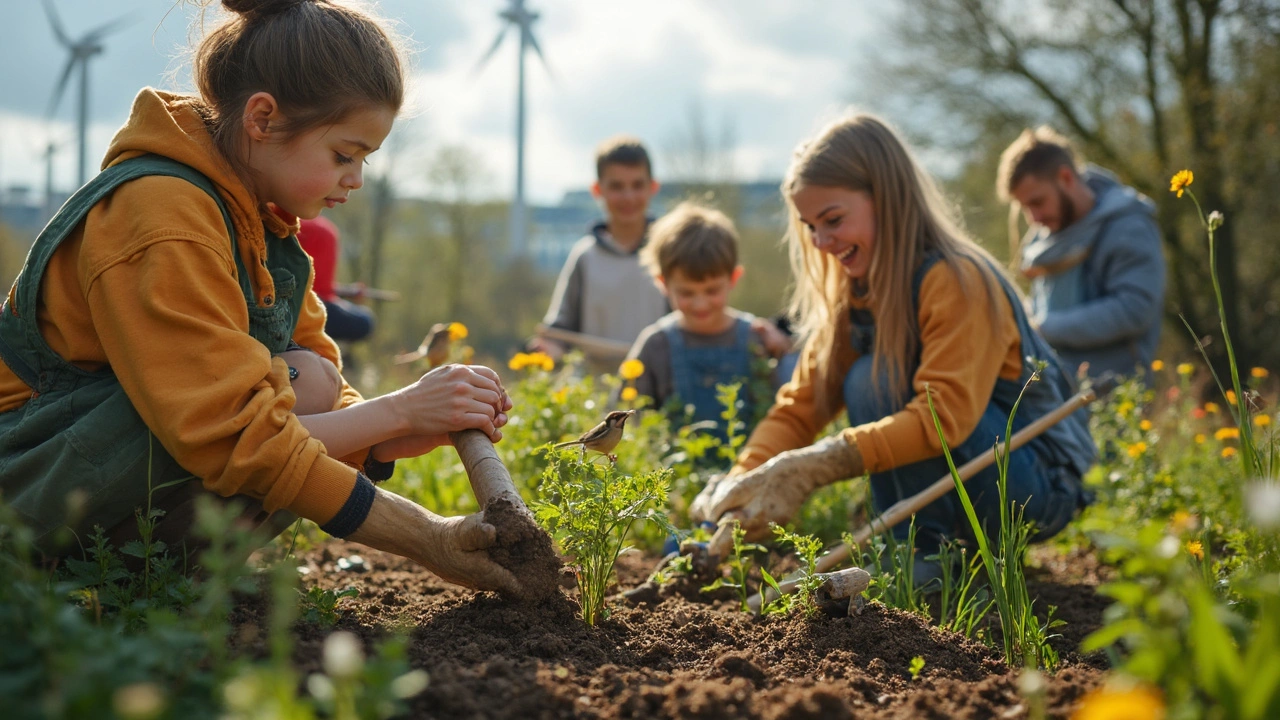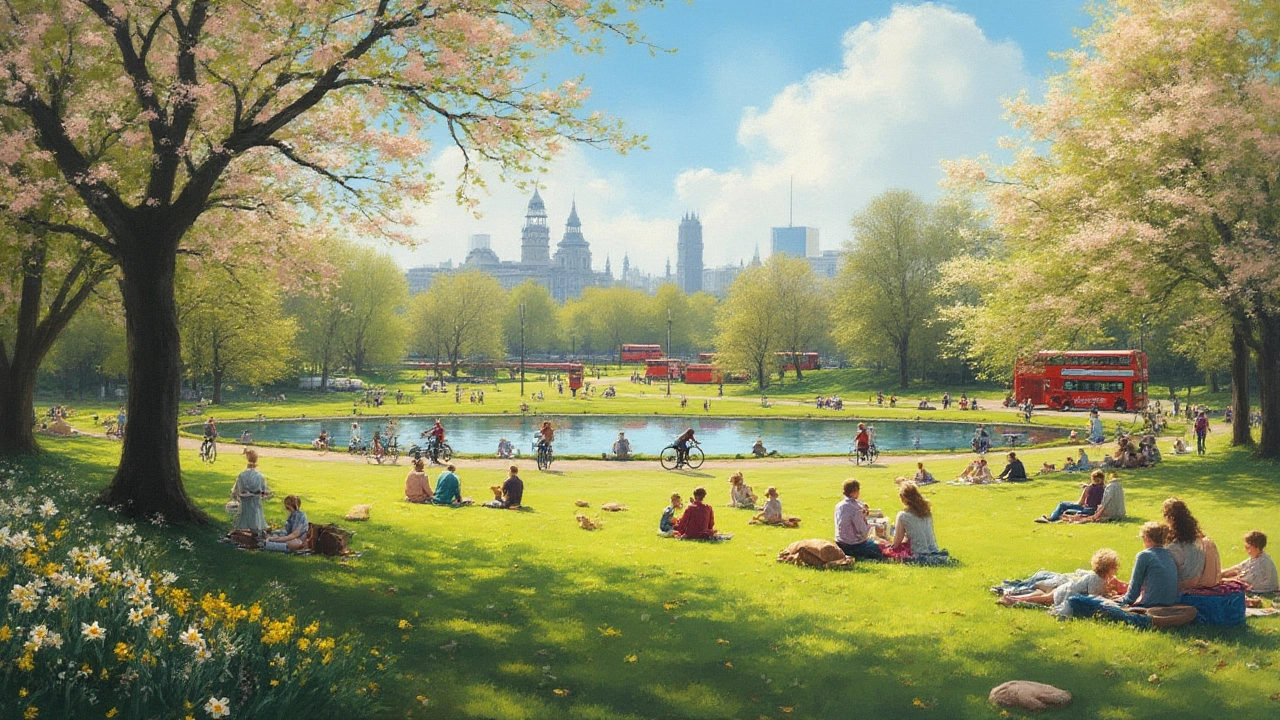
Finding eco-friendly parks in London isn’t just about beautiful scenery—it’s about picking places that care for the planet as much as you do. Right in the middle of the city, you’ve got Regent’s Park running electric boats on the lake, lush wildflower meadows, and loads of bins for recycling. It’s not just a spot for a quick stroll; it’s perfect for families looking to picnic in areas where pesticides and plastics are kept at bay.
If you’re after something a bit wilder, check out Hampstead Heath. You won’t see neatly cut flower beds here; instead, there’s a focus on rewilding and protecting natural habitats. Fancy a swim? The Hampstead ponds use natural filtration and don’t dump chemicals, keeping things clean and green for everyone—including local ducks and the odd sunbathing Londoner.
Small touches make a big difference. Look out for refill water stations, compost toilets at places like Queen Elizabeth Olympic Park, and park cafés using biodegradable cups. Parks that hold Green Flag Awards—think Hyde Park and Battersea Park—aren’t just ticking boxes; they’re leading the way with dedicated staff, wildlife-friendly maintenance, and low-energy lighting after dark.
Worried about litter? Parks across the city now run 'leave no trace' campaigns, with volunteers doing regular clean-ups (sometimes you can even join in and get the kids involved). So, next time you’re packing up for a Saturday, grab a reusable bottle, hop on your bike or the Tube, and head out to explore the best of London’s eco-parks—you’ll be surprised how easy it is to make a day out greener.
- Eco-Friendly Parks Across the Capital
- Sustainable Activities and Events
- Practical Tips for Greener Days Out
- Getting Around Green: Low-Impact Travel
Eco-Friendly Parks Across the Capital
London is packed with parks aiming to be kinder to the planet, but a few really stand out for their green credentials. Hyde Park leads the way—not just for size, but because of its push for biodiversity. The park has bee-friendly gardens, long grass areas for wildflowers, and plenty of birds and bats thanks to no-mow zones. Plus, the Serpentine Lido is filled by rainwater and cleaned with a filtration system, which slashes chemical use.
Brockwell Park down in Brixton deserves a mention. They run wildlife walks, let some lawns grow wild to help pollinators, and the café there uses Fairtrade and locally-sourced produce. You’ll spot loads of recycling bins, and there’s a refill station so you don’t have to keep buying new water bottles. The park’s community greenhouses put on veggie-growing workshops you can join, even as a total newbie.
Best parks London doesn’t mean just big names. Take Camley Street Natural Park near King’s Cross. It’s tiny by London standards, but it’s a real urban nature reserve, created on an old coal yard. No pesticides, just ponds for frogs, bee hotels, and even a garden for hedgehogs. It’s the place for families who want their kids to see actual wildlife, not just swings and slides.
And don’t skip Richmond Park. It’s the largest Site of Special Scientific Interest in the city and home to ancient trees, wild deer, and protected birds. The park limits cars and even has weekly volunteer events for litter-picking and nature projects—something a lot of locals get involved in. Plus, all toilets use rainwater flush when possible. Feels good using them, honestly.
- If you’re after eco-events, Southwark Park puts on regular “green days” focused on plastic-free picnicking and environmental workshops.
- Alexandra Palace Park offers community gardening patches—anyone can sign up for a slot.
- Queen Elizabeth Olympic Park is home to thousands of newly planted trees and has meadow areas set aside just for bees and butterflies.
The next time you’re picking a park for a chill day with the family or even just a morning run, check if they hold a Green Flag Award or list sustainable features. You’ll be doing your bit for the city just by choosing the right patch of grass.
Sustainable Activities and Events
If you want to dive into eco-friendly fun in London’s green spaces, there’s loads you can do that’s easy, hands-on, and actually makes a difference. For starters, the Best parks London has to offer regularly run outdoor classes to get people moving without any fancy equipment or waste. Clissold Park hosts free yoga mornings—just bring a mat, nothing disposable. Bushy Park organises wildlife walks where kids actually get to spot deer and learn why mowing less helps the whole ecosystem.
Community gardens are popping up in places like Burgess Park and Hackney Marshes. Anyone can join in, plant a strawberry patch, and take home something for dinner. The cool part? Everything’s grown with zero pesticides. If you’re competitive, Battersea Park runs annual eco-challenges, from upcycled art workshops to a real-life litter-picking race. Regent’s Park, meanwhile, hosts a "No Mow May" event that supports pollinators—bees love it, and so do the Instagrammers.
Parks are also leaning into sustainable events, ditching single-use plastics. At last year’s London Green Fair in Hyde Park, all stalls used compostable plates and reusable cutlery. Families could swap old sports gear at the swap station, making it cheaper and greener for everyone. Tables like the one below give a snapshot of what’s happening regularly:
| Park | Eco Event | Season | Is it Free? |
|---|---|---|---|
| Regent's Park | No Mow May & Wildflower Walks | Spring | Yes |
| Clissold Park | Outdoor Yoga (BYO mat) | Year-round | Yes |
| Burgess Park | Community Gardening | Spring/Summer | Yes |
| Hyde Park | London Green Fair | Summer | No (small entry fee) |
| Battersea Park | Eco Art & Litter Races | Autumn | Yes |
If you want to join, just check the park’s website or join their social media groups—many activities let you drop in on the day. Want more? The local app 'Love Clean Streets' gives live updates on litter-pick meetups and recycling events so you’ll never miss a green day out again.

Practical Tips for Greener Days Out
Want to make your outings in London parks a bit more planet-friendly? The good news is, a few smart changes can have a big impact. For starters, swap the single-use plastic: take a reusable water bottle, pack your snacks in containers, and avoid disposable cutlery. Many parks now have water refill stations, and you’ll see clear signs in places like Victoria Park and Clissold Park, so topping up is easy.
Lots of local cafés—think Pavilion Café in Victoria Park or Pear Tree Café in Battersea Park—have stopped handing out plastic straws or cutlery altogether. If you do fancy a coffee, bring your own cup. It won’t just save waste; some places knock 10-20p off the price if you reuse.
Worried about bins getting full on busy weekends? Don’t rely on the park’s facilities. Take your rubbish home, and separate recycling when you get back. It’s one less thing for staff to handle and keeps wildlife safe. According to Camden Council, "leftover waste in our parks drops by 30% on weekends when visitors take their rubbish home."
“Small acts by park-goers—like using refill bottles and avoiding plastic—help us keep London’s parks cleaner and greener for everyone,” says Friends of the Earth London region.
Try out public transport or hop on a Santander Cycle—nearly all major parks have docking stations close by. For those with bikes or scooters, most parks have decent cycle racks, and you’ll lower your carbon output by leaving the car behind. A London TravelWatch report found that 72% of Londoners live within 15 minutes of a bus stop headed to a borough green space.
- Pack meals in reusable containers.
- Refill your water from park stations.
- Use cloth napkins over tissue or wipes.
- Skip single-use BBQs—they’re not allowed in most parks and cause damage.
- Check event and opening times online to avoid wasted trips.
- Get reusable picnic blankets or mats.
| Park | Water Refill Stations | Recycling Points | No Single-Use Plastics Policy |
|---|---|---|---|
| Regent’s Park | Yes | Yes | Yes |
| Hampstead Heath | No | Yes | No |
| Hyde Park | Yes | Yes | Yes |
| Queen Elizabeth Olympic Park | Yes | Yes | Yes |
| Battersea Park | No | Yes | Yes |
The most important thing is to simply be aware of your footprint—London’s best parks need everyone on board if we want to keep them wild and welcoming. If you’re heading out with family, show the kids how easy it is to be green; get them picking up stray rubbish or help them spot bee-friendly flowers. These aren’t huge gestures, but they add up to real change.
Getting Around Green: Low-Impact Travel
If you want your day out at the best parks London has to offer to be truly eco-friendly, how you get there matters just as much as what you do once you arrive. London has built up some pretty solid green travel options in the last few years, so ditching the car is easier (and less stressful) than ever.
London’s public transport network is famous for being one of the best worldwide. The Tube, buses, and Overground are all good picks for getting close to the main parks. TfL buses and underground trains are now hybrid or electric in many areas—some studies show that the new electric double-decker buses cut CO2 emissions by over 40% compared to diesel versions. Don’t forget, kids under 11 always travel free on buses and the Tube, so it’s budget-friendly if you’ve got little ones like my boy Jaxon in tow.
For shorter trips, Santander Cycles are everywhere. Grab a bike at over 800 docking stations across the city and whizz off for as little as £1.65 for half an hour—plenty long enough to get from King’s Cross down to Regent’s Park. Some parks also have safe cycle lanes coming right up to their entrances. There’s nothing quite like a family ride, especially when Luna (our cat) tries to chase us out the door.
Walking remains the greenest option, obviously. Thanks to apps like Citymapper, you can easily find the quickest (or greenest) pedestrian routes. And for those pesky feet, remember: parks like Hyde Park and Greenwich Park are right on key transport lines, so you won’t need to trek far with a picnic in hand.
- Buy a contactless Oyster card for fast, cheap access to trains, Tube, and buses
- Use TfL Journey Planner to spot routes with electric buses or low-emission zones
- Plan park meetups so everyone arrives by public transport or bike—ditch the car share apps when you can
- Check the cycle and scooter parking at parks—Regent’s Park has secure spots so you can lock up safely
The London Assembly said: “Switching to public transport or cycling for even a couple of journeys a week can shrink your carbon footprint and help tackle the city’s air pollution.”
Here’s a quick breakdown of travel choices and their carbon impact when heading to London’s major parks:
| Travel Option | CO2 Emissions (g/km per person) | Cost Estimate |
|---|---|---|
| Tube/Overground | ~50 | £2.60-£3.20 per trip |
| Hybrid/Electric Bus | ~30 | £1.75 per trip |
| Santander Cycle | 0 | £1.65/30min |
| Walking | 0 | Free |
| Private Car | ~180 | £2-£6/hr parking + fuel |
Going green with your travel means you get the fresh air, avoid traffic headaches, and keep the parks feeling like the clean, safe spaces they should be for everyone. Next time you plan a trip, try swapping your usual routine for something greener—even the small changes add up fast in a city this size.
Categories
Popular Articles





